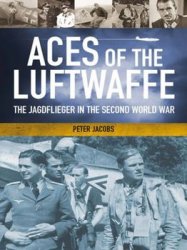SOCIALISM, Saint-Simon also deserves note for his stress on science and industrialization as leading forces of the future and for his matching insistence on POSITIVISM as the key to understanding society. Though he was one of the aristocratic defenders of the french revolution of 1789, he also believed that its turmoil had produced an urgent need for new forms of “organic” wholeness. These he analyzed in the writings that occupied the last twenty years of his life, culminating in the Nouveau Christianisme of 1825. Central to his thinking was belief in a potentially harmonious complementarity between capital and labor. The linkage between his name and early socialism was due less directly to him than to those French disciples who as self-professed “saint-Simonians” radicalized his ideas, particularly about private property, in the years immediately after his death. As for MARX and his circle, even though they criticized Saint-Simon for advocating a merely UTOPIAN SOCIALISM, they learned much from the sheer range of his meditations on the transformation from feudal to bourgeois society. It was indeed engels who conceded that this latter-day philosophe possessed, alongside hegel, “the most encyclopedic mind of his age.”
Salazar, Antoniode Oliveira (1887-1970), Prime Minister and effectively dictator of Portugal (1932-68). Born into modest circumstances, he had first contemplated entering the priesthood. Instead he soon became a right-wing street brawler, opposing the anticlerical measures of the First Republic (1910-26), before going on to distinguish himself as an economist at the University of Coimbra. In 1926, at the time of a military coup which overthrew the Republic, he came very briefly into government as finance minister. Two years later he returned to that post, and continued to occupy it for the next 12 years. In 1932, however, he became prime minister as well. His rapid ascent to high office is explained by his ability to appeal to the many strands of Portuguese CONSERVATISM, and to handle economic challenges at a time of global depression. He subsequently founded the estado novo, a regime with some loosely fascist features (see fascism) that lasted down to the early 1970s. Though Salazar was credited with re-establishing political stability, this was at the expense of liberal democracy. He established a dictatorial one-party state, eliminated internal dissent through GESTAPO-style methods, and promoted reactionary Catholic values as confirmed by the concordat of 1940. As foreign minister from 1936 to 1947 and minister for war from 1937 to 1943, he was sympathetic towards franco’s endeavors in Spain. During WORLD WAR II he appreciated that entry into the conflict on the axis side would threaten the Portuguese colonies. The subsequent reward for Portugal’s NEUTRALITY was receiving postwar aid via the marshall plan, and also becoming a founding member of nato as the only non-liberal-democratic state to be included. Though Salazar opened up his country’s severely impoverished economy to outside influences, and encouraged tourism from abroad, he was reluctant to engage in DECOLONIZATION. This led to a series of ugly conflicts within Angola, Mozambique, Guinea, Zambia, and Goa. Increasingly shunned by the international community, Salazar suffered a stroke in 1968 and was succeeded by caetano. The latter showed no inclination to liberalize Salazar’s authoritarian state until discontented junior officers helped precipitate a return to liberal democracy during the period 1974-6.
SalO Republic Officially known as the Italian Social Republic (RSI), this was the puppet-regime led by mussolini during the final phase of his career. Essentially dependent on hitler’s forces, it survived from September 1943 until April 1945. Though it had a number ofadministrative centers in northern Italy, the regime derived its informal name from the small town on Lake Garda that housed its main propaganda operations.
Sammlungspolitik Meaning “the politics of rallying together,” this term is chiefly relevant to the era of the german empire. Originating with BiSMARCK’s adoption of protectionist tariffs in 1879, it designated strategies aimed at reconciling the interests of big business with those of the JUNKER landowners. Here the central feature was increased investment in armaments and related manufacture combined with the maintenance of high import duties on agricultural products. Such attempts to rally “iron and rye,” particularly in the common cause of resisting the rising appeal of socialism, remained a notable but always problematic feature ofReich politics down to 1918.
San Marino (see micro-states[4])
SanStefano, Treatyof (see under russo-turkish wars; turkey and europe; Berlin congress)
SanjakofNovi Pazar (see novi pazar, sanjak of)
Sans-culottes French term referring to those who wore ordinary trousers rather than the knee-breeches and stockings of the upper classes, but which came to designate the urban, working-class, and generally male, militants who formed part of the popular movement during the french REVOLUTION OF 1789. Their political program centered around the guaranteed supply of bread at fixed prices, the prosecution of counter-revolutionaries, and the use of direct democracy or insurrection to achieve their aims. Members of the WORKING CLASS featured in many of the great journees of the Revolution, including the fall of the BASTILLE, the OCTOBER DAYS, and the attack on the Tuileries. However, the sans-culottes as a distinct grouping attained their mature form and peak of influence in 1792-4 when they dominated the 48 Sections or administrative units of Paris and were able to force their policy of price controls upon the middle-class deputies in the convention. Fiercely patriotic, they were strongly supportive of the war and of the terror. Their influence waned following the execution of Hebert and other popular leaders, and after the Convention restricted the autonomy of the Sections they ceased to be an effective political force.
Sarajevo assassination,1914 (see july crisis)
Sarkozy, Nicolas (1955-), President of France (2007-). Descended on his father’s side from minor Hungarian nobility, this Paris-born lawyer first came into politics as a supporter of Chirac’s broadly Gaullist cause (see de gaulle), serving as mayor of the wealthy suburb of Neuilly-sur-Seine from 1983 and entering the National Assembly in 1988. In 1993 he became Budget Minister under the premiership of Edouard Balladur, whom he eventually backed to represent the right in the presidential campaign of 1995. He then found himself marginalized after Chirac emerged as winner. it was not until the latter’s second term as president that Sarkozy regained major office, as minister for the interior (2002-4, 2005-7) and of finance (2004). He also became in 2004 the leader of the so-called Union pour un Mouvement Populaire (UMP), the reorganized umbrella grouping of diverse conservatively-minded elements that provided a base for his own presidential bid of 2007. This eventuated in a second-round victory over the socialist candidate, Segolene Royal. Though much of Sarkozy’s emphatically populist campaign had highlighted the excessive state interventionism that he criticized as marring the socioeconomic policies hitherto pursued under the fifth republic, the onset of global financial crisis in 2008 prompted some change of tone.
Saverne affair (see zabern affair)
Saxony Region of central-eastern Germany centered on Dresden. During the eighteenth century, Saxony formed an independent Electorate within the holy roman empire. In 1806 it became part of NAPOLEON I’s new confederation of the RHINE, and obtained the status of a kingdom. This remained headed by its former Elector, now royally retitled as Frederick Augustus I. The Vienna CONGRESS of 1814-15 allowed him to keep his throne, even though he had been one of the few German rulers sympathetic to Napoleon. He was forced, however, to yield over three-fifths of his territory to Prussia. Having also become in 1815 a member of the german confederation, Saxony developed in the course of the nineteenth century strong industrial and commercial activity based on cities such as Leipzig and chemnitz. in 1866 it sided with the habsburg empire in the austro-prussian war. Made vulnerable by defeat, the kingdom had little option other than to join the NORTH GERMAN CONFEDERATION formed under Prussia’s leadership in 1867. Four years later, the monarchy again managed to survive - now as part of the federal structure (see federalism[1]) of the new GERMAN empire molded by bismarck. After the GERMAN REVOLUTION OF 1918 had forced the abdication of its last king, Saxony became a Free state within the overall framework of the weimar republic. Under hitler any remaining semblance of independence disappeared. A saxon province was then briefly revived within the communist GERMAN DEMOCRATIC REPUBLIC before being fragmented into districts in 1952. Following german REUNIFICATION, a state of Saxony was once more established, now as an element within the enlarged structure of the federal republic of GERMANY and with a current population of some 4.2 million.
Scandinavia This region of northern Europe covers the principal areas of ancient Norse settlement. Thus it encompasses Sweden and Norway (which occupy the Scandinavian peninsula proper), DENMARK, and ICELAND. This quartet became the founding members of the nordic council in 1952. Three years later they were joined by finland, which, though quite distinguishable from the other four countries due to its predominantly non-Nordic base of population and language, is commonly regarded as also forming part of the Scandinavian region. So too are the Faeroe Islands, which constitute (along with the far more remote and mainly Arctic territory of Greenland) one of the two largely autonomous Danish dependencies. A degree of affinity between all these elements, which in combination give Scandinavia a current population amounting to some 25 million, has long stemmed from their shared possession of a predominantly Lutheran religious culture (see also Protestantism). Over the last two centuries or so, this has helped the Scandinavian countries to deal with each other in a predominantly peaceful manner. War has affected them only when their interests have become embroiled in wider conflicts generated chiefly by the greater European powers.
Towards the end of the eighteenth century the leading states of the region were the monarchies of Denmark and Sweden. The territory of the former included Norway and iceland, while that of the latter encompassed much of present-day Finland. Significant alteration occurred, however, as a result of the Napoleonic wars. British fears lest the Danish fleet should fall into French hands led, in 1801 and again in 1807, to the pre-emptive naval attacks known as the battles of Copenhagen. Following the second of these, the Danes allied themselves with napoleon i. As for the Swedes, their decision of 1805 to join the unsuccessful Third Coalition against France led them to become, in 1807, victims of the tilsit treaty between Bonaparte and Tsar Alexander i. This gave Russia a free hand in annexing their Finnish territory. Three years later the Swedish Estates sought to improve their country’s position in French-dominated Europe by electing one of Napoleon’s marshals, bernadotte, as their crown prince. However, acting as both regent and military leader, the latter eventually turned the tables on his former patron early in 1813, by bringing the Swedes into the final and eventually victorious coalition against imperial France. Thus the Vienna congress of 1814-15 confirmed that Sweden, while relinquishing certain pomeranian holdings to Prussia, should be rewarded with the acquisition of Norway, via a personal monarchical union created to the detriment of Denmark.
The state structure of the region altered little during the rest of the nineteenth century. The most notable feature was a further weakening of Denmark. After a brief war in 1864 it lost schleswig-holstein to Austria and Prussia, and by the 1870s Iceland had succeeded in securing for itself a significant measure of domestic autonomy. On the economic front, such limited industrialization as Scandinavia developed was most visible in relation to the iron-ore mining enterprises of central Sweden. A much more generalized experience was the region’s contribution to European MIGRATION overseas - most notably, an exportation of rural labor (see rural society) which was all the more significant when gauged as a proportion of the Nordic area’s relatively small population. The USA and Canada were the principal destinations: between 1830 and 1910 the former admitted no fewer than 1 million Swedes, 700,000 Norwegians, and 300,000 Danes.
By the turn of the century parliamentary constitutionalism and limited monarchism had been firmly consolidated in the Danish kingdom. They had also developed quite strongly in the Norwegian part of the royal union with Sweden. However, the future of that linkage was now placed under increasing strain by the growth of nationalism in Norway. Despite some risk of violent confrontation, the separation eventually achieved in 1905 proved peaceful, with the Norwegians obtaining full sovereignty and taking a Danish prince as their new king. The crisis also produced progressive constitutional reforms within Sweden itself. From 1914 to 1918 the policies of neutrality pursued by the three Scandinavian states limited the effects that world war i had upon them, even though they all faced trading and supply difficulties due to naval blockades. The conflict’s most important effect upon the region was evident in Finland, where claims for greater autonomy within the tsarist empire had been increasingly voiced during the first years of the twentieth century and where the opportunity of inaugurating the region’s first sovereign republic was then seized amid the Russian revolutions OF 1917. In the following year independence was also achieved by Iceland (though it retained a formal monarchical link to Denmark until a republic was declared in 1944).
The impact on Scandinavia made by world war II was altogether deeper, though its detailed effects varied notably as between the five states now present across the region. In April 1940 Denmark and Norway became the objects of successful German invasion and occupation. hitler moved against them partly because their geographical position made them vital to his naval strategy. Yet the Norwegian campaign had the additional aim of protecting the supply route (chiefly via the ice-free port of Narvik) through which neutral sweden was effectively compelled to continue exporting the high-grade iron ores so vital to the Nazi war effort. Iceland had, similarly, little choice other than to yield to demands coming from the Allied side. These sprang from awareness of its crucial strategic location, suitable for providing naval and air bases essential to the Anglo-Canadian (and eventually also the US) forces involved in the Atlantic war. As for the fifth country, the aggression by stalin that triggered the russo-finnish war of 1939-40 meant that, when Hitler launched Operation barbarossa, it was natural for the Helsinki government to offer military support to the axis advance.
Although by autumn 1944 the Soviet Union had recovered the gains that it had made (principally in Karelia) four years earlier, Finland was not subjected to general soviet occupation at the end of the war. However, under pressure from stalin and his successors, postwar Finland was obliged to commit itself to neutrality and generally to pursue policies that avoided direct conflict with soviet interests. Nonetheless, it proved possible after 1945 to go along with the other Scandinavian countries in resuming the practice of parliamentary politics and in consolidating the kind of welfarism already pioneered across the region by supporters of social democracy during the pre-war era. These were the kind of similarities that gave impetus to the consultative forum provided from the 1950s onward by the Nordic Council. Yet, in other important respects, the five states proved capable of taking different paths. For example, while Denmark, Norway, and Iceland were founder-members of nato in 1949, sweden and Finland chose to be neutral outsiders
- and remained so even sixty years later, notwithstanding that organization’s substantial enlargement after the end of the cold war. Similarly, in the context of a generally skeptical scandinavian approach towards the formal structures of European integration, only Denmark, Sweden, and Finland joined the European union. Even then, the first of these countries negotiated significant “opt-outs” from the 1992 maastrichttreaty, and in 1999 Finland alone decided to adopt the “euro” currency.




 World History
World History









